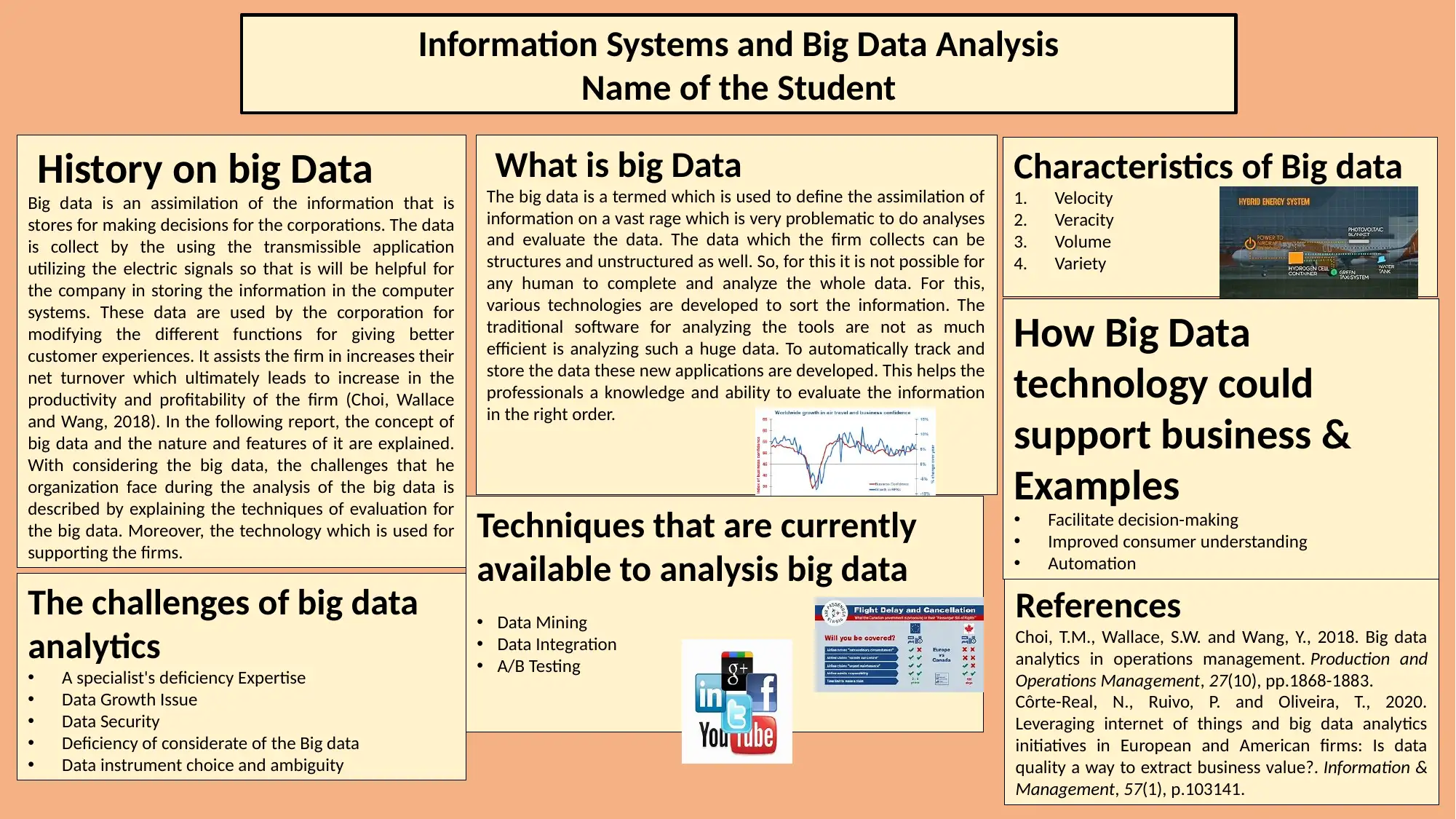Analyzing Big Data: Information Systems, Challenges & Technologies
VerifiedAdded on 2023/06/14
|1
|478
|429
Report
AI Summary
This report provides an overview of big data within the context of information systems, highlighting its assimilation for corporate decision-making. It discusses the nature and features of big data, including its volume, velocity, variety, and veracity. The report identifies key challenges in big data analytics, such as a specialist's deficiency, data growth issues, data security concerns, and the complexity of data instrument selection. It also outlines techniques currently available for big data analysis, including data mining and data integration. Furthermore, the report explores how big data technology supports businesses through facilitated decision-making, improved consumer understanding, and automation, referencing examples and academic sources to support its analysis. Desklib offers a platform to explore similar solved assignments and study resources.
